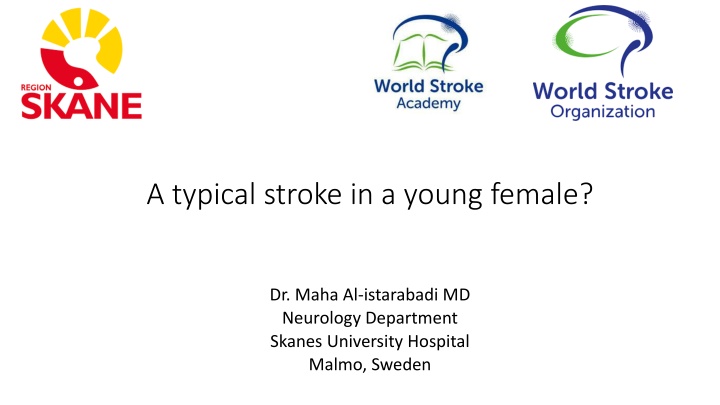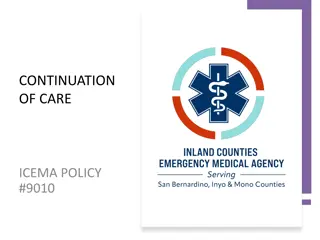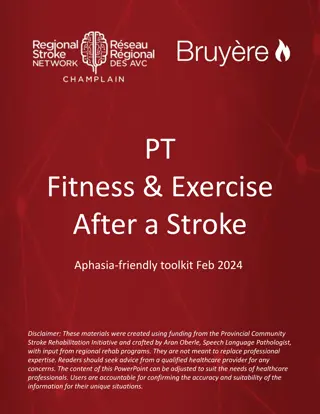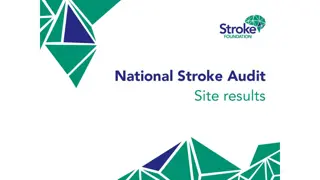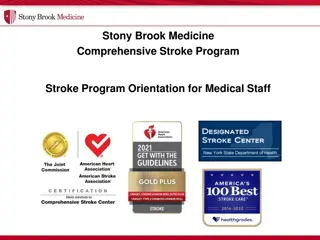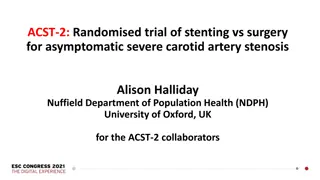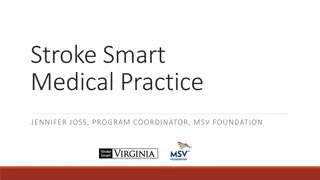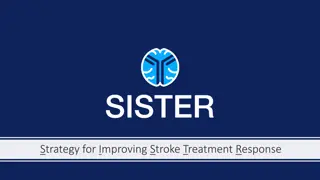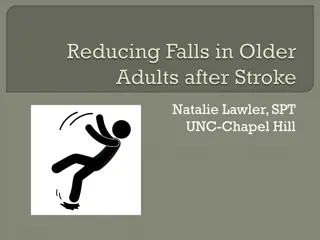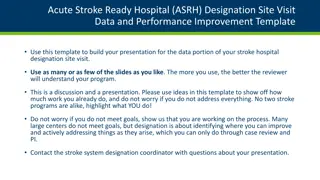A typical stroke in a young female?
In a case of a 49-year-old female presenting with stroke symptoms, the role of modifiable and non-modifiable risk factors in younger female stroke patients, potential stroke etiology, diagnostic work-up planning, monitoring, and follow-up strategies are explored. The patient's history, clinical and neurological findings, radiological examinations, and MRI results are detailed, along with emphasis on the association between migraine with aura and ischemic stroke in younger women.
Download Presentation

Please find below an Image/Link to download the presentation.
The content on the website is provided AS IS for your information and personal use only. It may not be sold, licensed, or shared on other websites without obtaining consent from the author.If you encounter any issues during the download, it is possible that the publisher has removed the file from their server.
You are allowed to download the files provided on this website for personal or commercial use, subject to the condition that they are used lawfully. All files are the property of their respective owners.
The content on the website is provided AS IS for your information and personal use only. It may not be sold, licensed, or shared on other websites without obtaining consent from the author.
E N D
Presentation Transcript
A typical stroke in a young female? Dr. Maha Al-istarabadi MD Neurology Department Skanes University Hospital Malmo, Sweden
What role do modifiable and non-modifiable risk factors have in younger female stroke patients? What could be the stroke etiology and how do we plan the diagnostic work-up? How do we monitor and follow-up these patients?
Case 49 year old female Arrives at the ER october 2020. Sudden onset of binocular diplopia and dizziness at work. Even dysphasia lasting several minutes. Past medical history Previous smoker Migraine with aura Suspected sleep apnea: Observed episodes of stopped breathing during sleep and loud snoring Obese BMI 38 2015 one episode of weakness/parasthesia in right leg. No radiological signs of ischemia. Secondary prevention was not prescribed. No family history of stroke No prior medication
Clinical and neurological findings at admission: Isolated diplopia without any other neurological deficits dissolving after 5 hours Normal physical examination BP 220/110 mm Hg Normal ECG, sinusrythm Body temperature < 37,5 Glucose 6,1 mm/L O
Radiological examinations Ct-brain and Ct-Angiography extra-intracranial vessels normal esp. posterior circulation No signs of dissection including aortic arch CT angiography: extra and intracranial vessels including aortic arch normal CT brain normal
MRI brain at admission: 15 mm hyperintense lesion on Flair Sequences Left medial thalamus
Q1: Which of the following risk factors in the patients history has a stronger association with stroke in younger woman? A.Smoking B.Migraine with aura C.Sleep apnea D.Stress Answer B Migraine with aura is associated with ischemic stroke in younger women. Sugested reading: Stroke 2007;38:2438-2445
Diagnostic work-up 24 hours heart monitoring no signs of atrial fibrillation Echocardiography normal, no PFO. Carotid ultrasound no stenosis, no atherosclerosis Laboratory examns - Blood tests: normal, including coagulation (antithrombin, protein c & s, lupus anticoagulant, cardiolipin antibody, DNA factor V mutation) Embolic Stroke of Unknown origin?
Q2: Which risk factor shows a stronger association with stroke in older women? A.Cardiovascular disease B.Atrial fibrillation C.Smoking D.Hypertension Answer: B Although the prevalence of AF is higher in men, women have a higher risk for stroke and death due to AF as well as worse outcomes after stroke secondary to AF. Stroke 2014 May;45(5):1545-88. doi: 10.1161/01.str.0000442009.06663.48. Epub 2014 Feb 6 - J Cereb Blood Flow Metab. 2018 Dec; 38(12): 2179 2191.
dietician Treatment and follow-up ASA 75 mg , Simvastatin 40 mg, Enalapril 5 mg Regular follow-ups with control of BP Control Diabetes Physical activity Contact with dietician for weight loss Referral for diagnosis and treatment of sleep apnea Extended cardiac work-up Implantable cardiac monitor 1 year detection atrial fibrillation
Q3: Why are women more difficult to include in stroke trials? A. They often refuse B. Older at onset compared to men C. They often present with severe symptoms, which makes an inclusion difficult D. They are less women who suffer a stroke Answer B Women might be more difficult to include in trials because they tend to be older at stroke onset, have more comorbidities, and are more likely to have pre-existing functional impairment. Moreover, they are more likely to live alone than are men. Nat Rev Neurol 13, 521 532 (2017)
Suggested reading 1.Madsen et al, Focused update- Impact of conventional risk factors on stroke in women: an update Stroke 2018; 49, 3 : 536-542 2. Probable Migraine With Visual Aura and Risk of Ischemic Stroke, Stroke 2007;38:2438-2445 3. Guidelines for the prevention of stroke in women: a statement for healthcare professionals from the American Heart Association/American Stroke Association. Stroke 2014 May;45(5):1545-88 4. Sex differences in stroke: Challenges and opportunities, JCerebBloodFlowMetab2018 Dec; 38(12): 2179 2191 5. Women and stroke: A matter of education? Nat Rev Neurol 13, 521 532 (2017)
